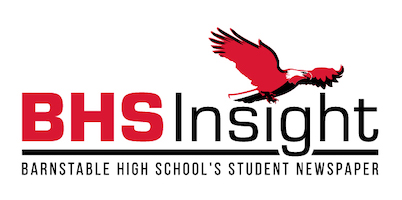Editorial: The Return to Fully In-Person School Causes Concern
April 15, 2021
Even with the Town of Barnstable’s numbers rising in COVID-19 cases, the state is requiring all public schools to revert back to mandatory in-person learning before the school year closes. Students and staff at Barnstable High School were already on edge with how the school year started: first semester began a month later than usual, schedules were a mess, many desired classes were dropped, and former Principal Patrick Clark was put on administrative leave and never returned. After finally adjusting to the new “normal” at BHS, the state is forcing the transition to in-person learning at the wrong time, especially with growing concerns surrounding the safety and well-being of the BHS community.
As many know by now, the CDC has adjusted the six feet spacing rule to three feet, providing an opportunity for schools to move more desks into classrooms. Although from a first glance this seems like it would be nice to reunite with peers from other cohorts, but the risk is not worth the reward. Some of us have ill grandparents—who are most vulnerable to the virus—at home, which in turn makes us nervous for their health. We have been solely remoting into classes for over a week now due to COVID-19 surging across Cape Cod, and this shutdown started with the school at half capacity. If the spread is indeed happening within the school, then it doesn’t make sense to pressure our district into transitioning to full capacity.
Not only would this decision combine Cohort A, B, and C, this would also impact the schedule just weeks before the end of the school year. We believe it is pointless to fully go back to school for only six weeks or so and that it would do more harm than good to have all students back in the classroom at the same time. Everyone has finally adjusted to the shortened Wednesdays and the 80-minute classes, so by taking that away and disrupting the daily routine that we’ve hesitantly grown accustomed to, students will be subjected to an even greater disadvantage. Instead, BHS administrators should reach a common consensus on the schedule and stick to it for the school year. Generally speaking, if the proposed schedule remains uneffective throughout the school year, they should have BHS return to school in the fall with a new one, not have it go back and forth four times in the same month.
Students have not been the only ones academically affected by the pandemic either. Last fall, teachers were expected to alter their teaching style in order to accommodate students on Zoom. If everyone is forced to return to school at the same time, teachers will be expected to abandon hybrid teaching habits immediately, causing unnecessary stress for them to remake lesson plans yet again.
When it comes to possible reasonings on why the state views transitioning to full capacity as a top priority, it is oddly convenient timing that it is standardized testing season. Since taking MCAS is required to graduate, all current sophomores are still technically ineligible to receive their diploma. If students do end up having to take the MCAS this spring, then they will forfeit more in-person class time on top of what they have already lost. While meeting this requirement is essential under state law, it is not in our students’ best interest at this time. Massachusetts officials previously allowed districts to postpone their start date for this school year and take precaution, but now they are being reckless by endangering the lives of students and local administrators in exchange for standardized test scores.
The decision to move forward and send all students to school has ruffled the feathers of several Barnstable community members, who disagree with the state and want to find a better solution, such as keeping BHS a hybrid school. BHS needs to request a waiver from the state allowing Barnstable High School to remain hybrid. Massachusetts should grant the districts the decision to reopen or not, and Meg Mayo-Brown knows the type of learning climate we can handle far more than any outside government official.
Elementary school kids have been in school 4 days a week so this sudden schedule alteration wouldn’t change much for them as it would for us. Kids that are learning how to read and write need the in-person interaction and the access to foundational english and math skills. If elementary schools were solely online, then kids would not be motivated to participate, which would be detrimental to their learning.
Most schools on Cape Cod aren’t as big as we are so they will face less problems in terms of safety control. BHS students have already been ignoring the hallway arrows as it is, and the rainbow staircase is bound to be more congested if we resume full capacity. Students will continue to pretend the directional arrows don’t exist, but even if the arrows were acknowledged there still wouldn’t be enough space to follow them correctly.
If we are forced to prepare for the worst and have everyone return back to school, then there are definitely some precautions that need to be.
A mask break is a needed break from learning and a time to reset, but most teachers are no longer following them. Going outside for fresh air should be enforced more by the administration. Instead of having mask break locations be at double the capacity they initially were in the fall, the new mask break could be having people walk a lap around the school. Students would typically spend the same amount of time outside as they would on a normal mask break, people would be more spread out, and nobody would be standing in a corner on their electronics.
It is reassuring to hear that there will also be an additional third lunch that takes place between the current first and second lunch in an effort to adjust to a larger school population. Once again, social distancing guidelines have to be more enforced by staff members who monitor lunches. A lot of students in the PAC and Main Cafe do not follow the rules set in place, prompting some of us to eat lunch in our teachers’ rooms instead.

